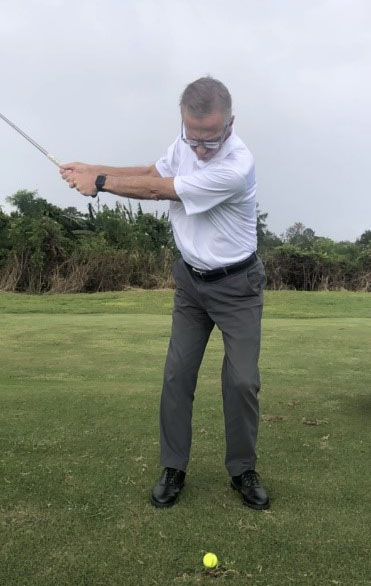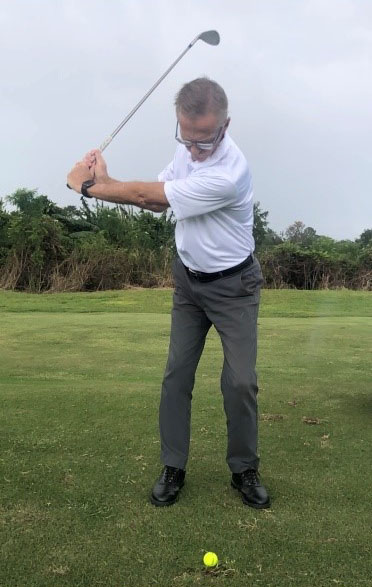The Nine O’clock Wedge Swing

By Bradley Turner MBA, PGA Director of Online Golf Instruction
Keiser University College of Golf
Picture a clock face on the golfer from a face-on view. The player head would be at 12:00, and the ball would represent 6:00. The picture to the right is a good example of the 9:00 wedge swing where we see the lead arm about parallel to the ground with no more than a 90-degree hinge. This is a fundamentally sound position, one that you want to replicate. The benefit of the 9:00 wedge swing is it will limit your clubhead speed and reduce the chance of “part” wedge shots that explode off the clubface. The result will be improved distance control from 50-125 yards and an increase in up and down percentages.

The first key in successfully developing this scoring weapon is monitoring the length of your lead arm swing. The lead arm should stop when it reaches parallel to the ground, which represents 9:00 on the face of a clock. For golfers that have a longer swing, much like Masters Champion Dustin Johnson, this will take time to sense this position successfully. At first, many golfers believe they cannot hit the ball anywhere from a 9:00 position! Everyone can learn the 9:00 swing, but the timing of the golf swing needs to be trained and understood. The timing can come very quickly!

The second key is the proper loading or hinging of the golf club. Ideally, the club will hinge from 80 to 90 degrees when the lead arm is parallel to the ground. Too much hinge (right) increases clubhead speed, and we are trying to limit the clubhead speed. Not enough hinge (left), and the player will be unable to produce satisfactory clubhead speed to execute the shot properly.

The added benefit of this wedge shot is the golfer is getting a two for one benefit. This “partial” golf swing will help you not only with finesse wedge shots but full iron shots as well. Spend some time developing this important shot, and you will see tremendous improvement from 50-125 yards, and lower scores will certainly be an outcome for you to enjoy.
If you’d like to study with Bradley Turner and other PGA Master Professionals, contact The College of Golf today.












